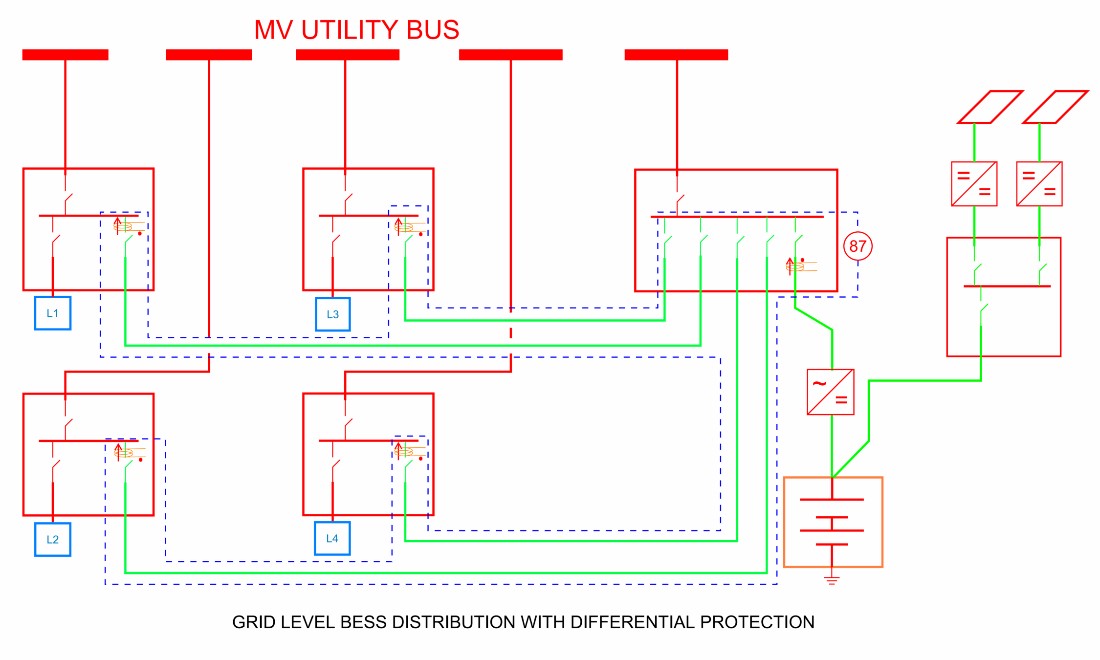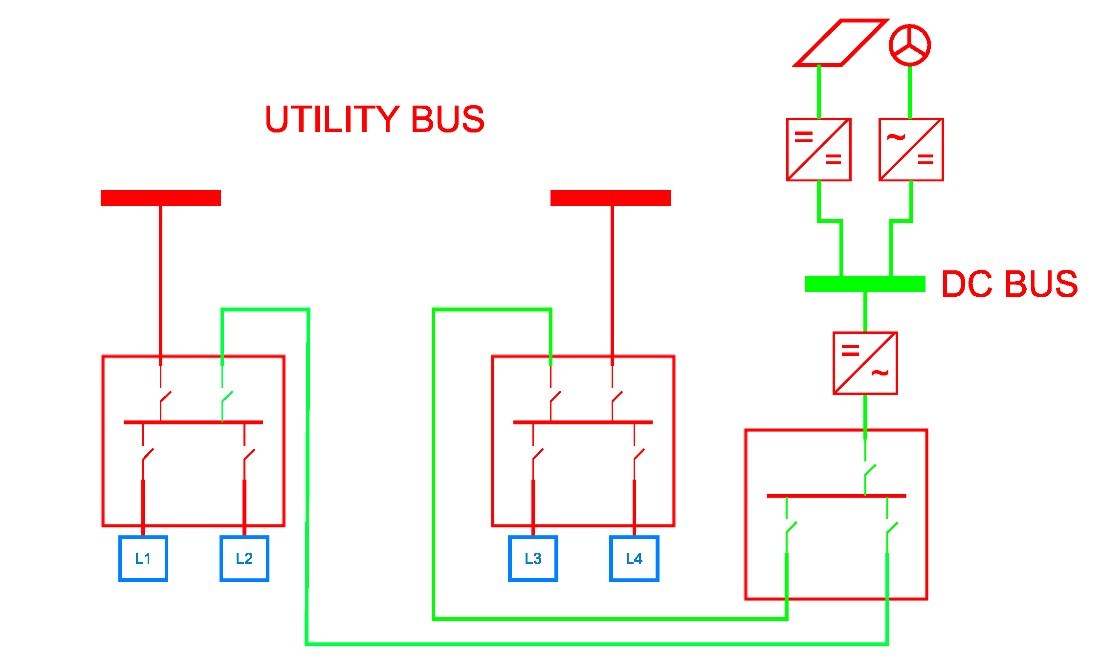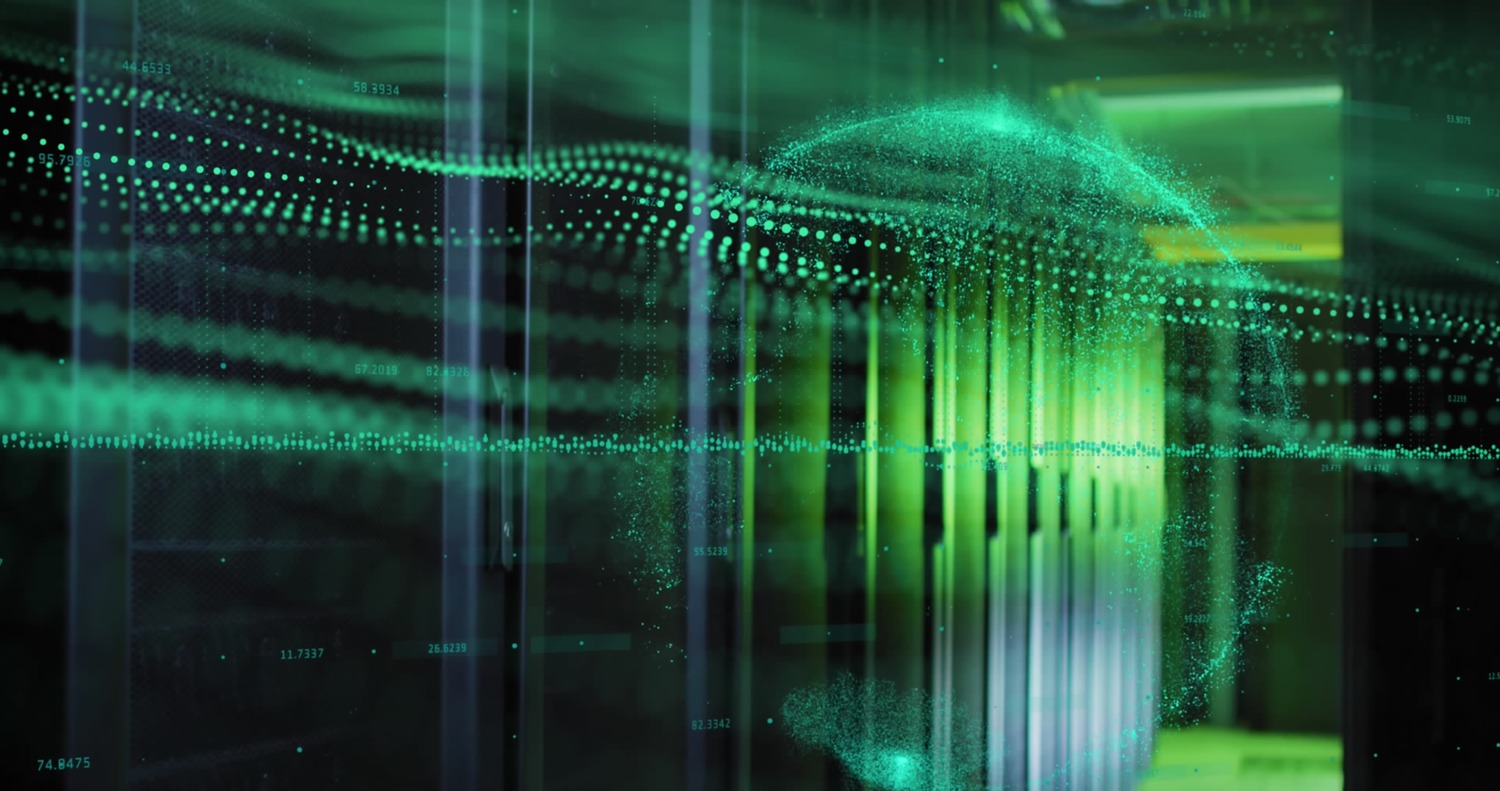By: Somsubhra Ghosh, PE, LEED GA, Senior Electrical Engineer
Powering AI data centers
The data center industry is at a precipice and is standing at the beginning of a second revolution. The push? Artificial Intelligence (AI). There are two specific types of data center infrastructure. Type A is the traditional, high reliability data storage and access platform. Type B is a high compute, resource-intensive but flexible platform required to train AI systems
Reconciling these two data center infrastructure types while emphasizing efficiency may present greater challenges due to their significantly different requirements. The AI-based Type B infrastructure is relatively new. Based on the data flow requirements, it has room for improvements before it reaches maturity.
It is also important to know the amount of available capacity in the power grid to support these high-intensity infrastructures. Many owners must explore nontraditional approaches, such as connecting directly to nuclear power generation centers or deploying small modular reactors (SMRs) as part of their data center campus. This places large constraints on location availability and poses challenges for the facility management of power generation centers. It is also imperative to understand that the deployment of large-scale power generation centers can significantly increase the construction timeline of these data centers.
Is it possible to find a sustainable solution using proven and existing components? The answer may hide within renewable power integration strategies. This analysis will examine the implementation strategies for integrating renewable generation in Type B data centers.
Understanding the load profile of data centers
- High power density requirements: Most, if not all, modern AI servers, particularly those equipped with the latest NVIDIA GPUs can consume 700-1200W per chip. Many configurations often involve multiple GPUs per server and multiple servers per rack that can push power densities up to a staggering 36-50KW per rack even with traditional racks by 2027.
- Variable workload demand: Unlike traditional Type A data centers, AI workloads can be scheduled for flexibility. They usually have a lower emphasis on the uptime of the servers. Redundancy and reliability are considered in the designs, but they are not prioritized as highly. This is because the data refined by the vast amount of computer resources can be backed up by a smaller cluster or a highly reliable server.
This is a significant distinction that allows hyperscale vendors to create a reduced generator version of their Type A designs, where utility-based N+1 redundancy is enough to meet the design requirement.
Renewable energy integration strategies
The US Department of Energy and Office of Energy Efficiency and Renewable Energy (EERE) indicate that data centers consume 10 to 50 times the energy per floor space compared to typical office buildings, making them one of the most energy-intensive building types being constructed today. These facilities use about 2% of the nation’s electricity.
Globally, power by data centers is 1-1.3% of all electricity used. The International Energy Agency (IEA) also reports that since 2010, “The number of internet users worldwide has more than doubled, while global internet traffic has expanded 20-fold.”
The corresponding demand for digital services and data center facilities will continue to grow. How we choose to power these centers will have a major impact on the environment. The hunt for quickly deployable modular distributed power generation systems becomes more pressing. Renewable energy has been the top choice of generation. In 2024, combined renewable energy sources accounted for 32.1% of the total global electrical energy supply and became an integral part of the data center industry.
The use of renewable energy, such as solar, wind and geothermal sources, reduce greenhouse gas emissions and help to reduce dependence on traditional fuels like oil, natural gas and coal. In addition to reducing carbon emissions, renewable power generation increases sustainability by reducing energy costs while also supporting local economies through employment opportunities that are created when companies install solar panels or wind turbines at their facilities.
We must challenge ourselves to consider if we can utilize and integrate more sustainable approaches for data centers. Based on industry best practices, the following are design considerations for common renewable distributed energy resources and integration strategies.
Offsite power purchase agreements (PPAs)
An offsite PPA, commonly employed by hyperscale developers and owners, secures an arrangement where a third-party developer installs, owns and operates an energy system on a customer’s property. This approach offers key benefits, including:
- Scalability: Access to larger renewable energy projects without on-site space constraints. Large-scale implementation has the benefit of becoming more specialized and tends to be more efficient than their small-scale counterparts, offering a higher capacity utilization factor and utilizing economies of scale.
- Predictable pricing: A key benefit that can be built into costs with long-term contracts that offer stable energy prices.
Special considerations should be made about factors such as regulatory compliance and grid interconnection that ensure the contracted renewable energy is delivered effectively to the data center.
On-site distributed energy resources (DERs)
Battery energy storage systems:
Solar photovoltaic (PV) systems
- Space requirements: Approximately five acres or 220,000 square feet are needed per MW of solar photovoltaic capacity.
- Energy yield: In solar-rich regions, solar photovoltaic installations can achieve capacity utilization at 18.6%, an annual energy production of approximately 1,630 MWh per MW installed. Hyperscale data center installations typically reach about one million square feet of roof space for about 35 MW of IT capacity. A rooftop solar installation can theoretically reach about 4.5MW capacity and generate over 7000MWh of energy per year. This is a significant reduction in grid power usage.
A sample system schematic is shown in Figure 1 with appropriate differential protection.

Figure 1: Grid Level BESS Integration with Solar System
Technical integration: Many data centers are equipped with battery backup systems. Type B data centers typically have a reduced capacity for battery storage. However, they are still used to back up the network and storage nodes. These typically account for approximately 10% of the total demand and can approach the aforementioned solar capacity and reduce the need for additional infrastructure. Simultaneously, existing equipment available from established manufacturers can enable integration of the UPS, battery energy storage system and solar integration by incorporating the use of inverters, dual conversion UPS modules, battery monitoring and management systems (BMS).
A sample schematic of this kind of system is shown in Figure 2.

Figure 2: UPS level Solar integration
Wind turbine system
Similar to solar photovoltaic systems, wind turbines also benefit from large scale implementations. For large wind projects exceeding 20-meter height (MW), about 85 acres of area are required per MW of installed capacity. However, only about 1% or less of this land is used for the turbines and the rest is available for infrastructure use. Wind turbines capable of delivering power exceeding 3 MW are approaching sizes of about 100m high with a rotor diameter of 140m. As with solar, high wind areas offer the most efficiency with these installations. Texas currently leads the pack, followed by Iowa and Oklahoma. There is also a large untapped offshore wind power potential around the Great Lakes.
Direct source coupling
The generation systems may also be directly connected to the grid and create a co-generation system without the battery component. This can offset the total energy use. However, online coordination with grid controllers and disconnection of these sources may be necessary at a grid outage to maintain safety.
Battery storage integration design considerations
DC system integration
A solution is to integrate a battery energy storage system that includes a UPS system operating at 480V, 3P. To maintain redundancy, it may be desirable to match integration points with the UPS module capacities to uphold total system redundancy. Implementation of this can be similar to the schematic shown in Figure 2. Given that solar cells can provide DC output, the use of existing power converters can enable stable DC-DC connections for battery charging directly from solar energy without needing any extraneous frequency matching. Integrated UPS system controllers can be modified to modulate the battery charging component coming from the grid based on the solar converter’s available output. A similar arrangement can also be configured with wind turbines or other DERs. Depending on the source, separate AC-DC converters may be necessary because DC systems require a lot less complexity in coupling and power sharing between different sources.
Grid level battery energy storage systems (BESS)
These systems are largely integrated at the facility level and require a large battery capacity to be viable. Because of their energy cycle and capacity, non-chemical batteries like flywheels, sand storage or other solid-state types offer a more economical option now, despite having lower energy density. Figure 1 shows an example of how BESS can be integrated within the design with the appropriate protection requirements. It serves the functionality of storing excess renewable energy for use during peak demand or when renewable generation is low.
Depending on the integration within the system, they can be sized to a fraction of the facility’s operation size to work as a partial backup or match the facility size to provide full backup. The battery capacity is also determined by the desired autonomy duration when the system needs to operate in an islanded microgrid mode during grid instability or outage. A key consideration for integration is choosing an appropriate energy management system (EMS) that can coordinate charging and discharging cycles and optimize energy use and cost savings.
The key to grid-level integration is to divide the system load into portions that correspond to the available battery capacity, which helps prevent overloading during an outage. This can be scaled so when larger capacities become available, additional ties between the switchgears can enable larger portions of the load to be fed from the solar system.
A system with renewable components and BESS can be integrated seamlessly into a modular MV distribution, as shown in Figure 3.

Figure 3: Modular DER integration strategies
Limitations of data center power consumption
Hyperscale data centers met the challenge of driving costs down. Typically located on a rural campus for a specific user, these data centers have enough energy to power cities and ultimately drive costs down for users. However, with the surging demand for energy, industry conversations have shifted to a focus on edge data centers being the future.
Edge data centers are facilities located close to end users and tend to be smaller in size. Hardware and/or software components are used to temporarily store data, improving computer response time. This pivot to these smaller data centers will have a significant impact on energy consumption patterns as water use efficiency (WUE) emerges as the top performance and optimization criterion for site owners. Most of the energy used by data centers is to maintain their servers, which consume approximately 1,000 kWh to 160000 kWh per square meter per year. The use of more water-efficient cooling systems, such as chillers indicates a shift toward a more energy-dense system that seems to work in favor of the more space-constrained edge data centers.
These smaller data centers have a markedly different design goal from hyperscale data centers. The current approach to integrate redundancy at a transmission and distribution level will change into interweaving redundancy in deployment sites as small-scale data centers become more prevalent. This creates significant speculation about how global energy production will keep pace with demand as these data centers quickly deploy.
The danger is that edge data centers may far outpace the capacity for energy growth while also being more energy dense and less efficient than hyperscale data centers.
Making the case for renewable energy in data centers
Renewable energy sources are inherently intermittent. Without a large battery storage component, this intermittency easily disrupts the system’s reliability. Most of the existing wind and solar power integration are currently implemented through grid-following inverters, which function well when the grid is stable but do not support grid stability, in absence of ‘grid-forming’ generating sources. Coupled with weather-related impacts and grid design factors, this can cause large-scale grid failure events. Finding a balance between an increased renewable component and demand for a more reliable utility makes this an unstable option.
A solution, given grid capability constraints, is to create islanded microgrids comprised of renewable DERs and locally fed data centers. When connected with the scalable edge data centers, the different approaches to energy production and distribution begin to have an outsized effect on the country-specific approach to renewable energy generation. This can also act as positive feedback to achieve synergy between the increasing demand for data centers and maximizing the renewable component of energy used in them.
Future of data center energy outlook
There has been progress in the integration of renewable energy into data centers over the past 20 years. The question is, “Will it be enough to keep up with the expected surge in power demand?” The proliferation of edge computing is creating new challenges that will have to be addressed. With that said, any progress is good progress.
Incorporating more sustainable energy sources into data center designs is an obvious strategy for facility owners and operators to continue pursuing. Renewable energy is beneficial for the environment, and is also cost-effective, making it a win-win situation in any calculation.
We’re ready to help our clients take more steps toward good progress. To learn how we can help your next data center project, contact me at somsubhra.ghosh@exp.com.

